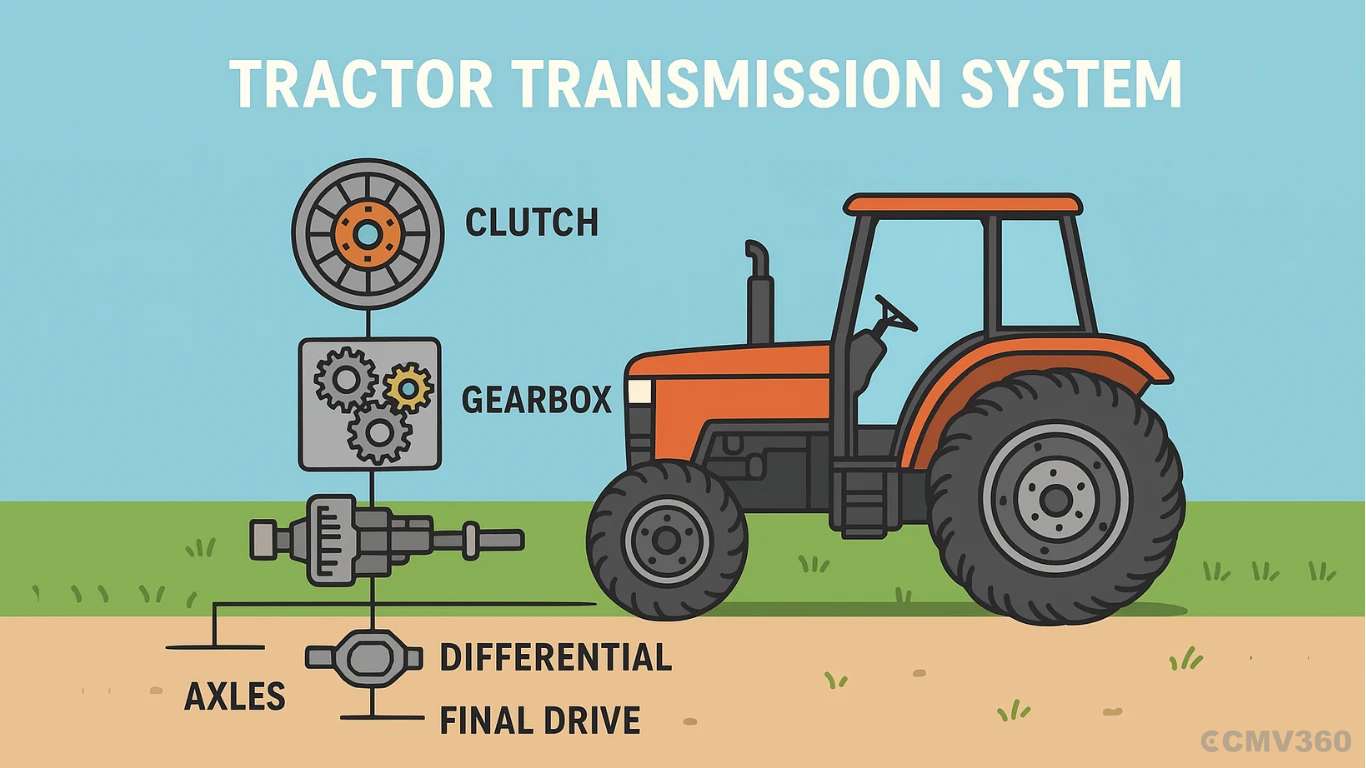Ad
Ad
Major Diseases in Mango Crop and Their Effective Solutions: A Complete Guide for Farmers

India is globally renowned as the largest producer of mangoes, accounting for nearly 60% of the world’s mango production. Mango is not just a fruit here, it's an emotion tied to cultural and economic aspects of rural livelihoods. Uttar Pradesh alone contributes to almost one-third of the country's mango production. In recent years, the government has collaborated with agricultural scientists and global experts, especially from Israel, to improve mango farming practices. This has resulted in better productivity, fruit quality, and export potential.
As the current mango crop nears maturity, approximately 75% ready, farmers are eagerly preparing for market arrival, expected in the next two to three weeks. However, this is also a sensitive time. Rising temperatures and humidity create favorable conditions for pests and diseases that can severely affect crop yield and fruit quality.
Also Read: Top 4 Government Schemes to Start Your Business – Get Loans, Subsidies & Full Benefits
In this detailed report, we will discuss the most common and serious mango diseases, their symptoms, and scientifically recommended solutions as advised by ICAR Central Institute for Subtropical Horticulture (CISH), Rehmankheda, Lucknow.
Why Timely Disease Management is Crucial for Mango Farmers
With climate change affecting temperature and humidity patterns, pest infestations are becoming more frequent and intense. If not managed during the early stages, pests like thrips, mealybugs, inflorescence midge, and fungal diseases like blossom blight can spread rapidly, affecting not only the current yield but also the long-term health of orchards.
Proper pest and disease management is key to:
Ensuring healthy flowering and fruiting
Improving fruit size, quality, and taste
Increasing farmer income through better market prices
Enhancing export quality standards

1. Blossom Blight in Mango: A Serious Fungal Threat
What is Blossom Blight?
Blossom blight is a fungal disease that strikes during the flowering stage in mango orchards. Caused by fungi, it disrupts the fruit-setting process, leading to significant yield reduction. According to CISH scientists, this disease can wipe out entire flower clusters, preventing mangoes from forming at all.
Favorable Conditions for Spread
Excessive rainfall during flowering
High humidity in orchards
Poor air circulation
Lack of orchard sanitation
Symptoms of Blossom Blight
Dropping of flowers before fruit sets
Drying of small fruitlets
Disruption in the fruit development cycle
Blackening and browning of flower stalks
Effective Management
Regular Monitoring: Inspect orchards every 3–4 days during flowering.
Pre-Flowering Orchard Cleaning: Remove weeds, prune trees for better air circulation, and dispose of old debris.
Fungicide Spraying:
Carbendazim 12% + Mancozeb 63% WP
Trifloxystrobin + Tebuconazole (25% + 50%)
Mix in 1 litre of water and spray evenly on the inflorescence.
This dual-action fungicide solution offers both curative and preventive benefits and is considered effective by ICAR experts.
2. Mango Blossom Midge: A Small Insect with Big Impact
What is Blossom Midge?
The Mango Blossom Midge is a tiny insect, but its larvae can cause heavy damage during the flowering stage. These larvae burrow into the base of the flower stems (peduncle), stopping nutrient flow and causing drying and falling of entire flower bunches.
Signs of Infestation
Small black or brown spots at the base of flowers
Dry and brittle inflorescences
Presence of holes in flower stems
Reduced fruit set and flower death
Management and Prevention
Orchard Hygiene: Remove dried twigs, fallen flowers, and weeds.
Avoid Over-Fertilisation: Excess nitrogen encourages soft plant tissues, which attract midges.
Chemical Control:
Spray Imidacloprid 17.8 SL @ 0.3 ml/litre of water
Or Thiamethoxam 25 WG @ 1 gm/litre
Add a sticker (1 ml/litre) to improve spray coverage
Repeat after 10–12 days if infestation continues
Pest Monitoring: Use yellow sticky traps to detect and monitor the pest population.
These strategies help reduce the pest lifecycle and protect flowers during the critical development phase.
3. Mealybug Infestation
What is a Mealybug?
Mealybugs are tiny, soft-bodied insects that secrete a white cotton-like wax and suck the sap from mango branches, leaves, and flowers. They are most active from January to May and can become a serious issue if not addressed promptly.
Damage Caused
Sticky leaves and flowers due to honeydew secretion
Appearance of black sooty mold on fruits
Drying of new shoots and inflorescences
Stunted plant growth
Natural and Cultural Control Measures
Regular Cleaning: Keep orchard floors clean and remove weeds.
Pruning: Remove and destroy infected branches.
Soil Management: Place insecticide dust around tree trunks to stop nymphs from climbing.
Avoid High Nitrogen: Excessive fertilisers make plants more vulnerable.
Chemical and Biological Control
Spray Spirotetramate 11.01% + Imidacloprid 11.01% SC
Use neem oil 5% or neem-based insecticides for organic control
Introduce Cryptolaemus montrouzieri, a natural predator of mealybugs
With a balanced combination of chemical and biological methods, farmers can control mealybug infestations and protect their crop’s health and quality.
4. Thrips Infestation
What are Thrips?
Thrips are small, thin, black or brown insects that damage mango crops by sucking the sap from leaves, flowers, and young fruits. These pests thrive in the February to April window, coinciding with the early flowering and fruit development stages.
Symptoms to Watch For
Silver or brown patches on leaves
Leaf curling or drying
Deformed or underdeveloped fruits
Poor fruit set due to damaged flowers
Integrated Pest Management (IPM)
Early Detection: Monitor orchards during new leaf and flower development.
Cultural Practices: Remove alternate host plants, weeds, and fallen flowers.
Chemical Solutions:
Imidacloprid 17.8 SL
Tolfenpyrad 15% EC
Thiamethoxam 25 WG
Use as per the recommended dosage and spray evenly.
A combination of cleanliness and preventive spraying can ensure thrips remain under control and do not impact the crop quality.
Final Recommendations for Mango Farmers

At this critical stage of crop development, mango farmers are advised to adopt the following best practices for disease prevention and pest control:
Regular Orchard Monitoring: - Inspect mango orchards twice a week for early signs of infection or pest attacks.
Maintain Orchard Hygiene: - Remove weeds, prune trees, and clear fallen debris to prevent pest breeding.
Balanced Fertilisation: - Avoid overusing nitrogen-based fertilisers and maintain soil health.
Use Sticky Traps: - Install yellow sticky traps to monitor pest activity and make timely decisions.
Follow Spray Schedules: - Use the prescribed fungicides and insecticides as per ICAR-CISH recommendations.
Adopt Biological Controls: - Introduce natural predators like Cryptolaemus beetles and use neem-based products to reduce chemical load.
Also Read: Easy Farming Tips to Take Care of Your Crops in Summer
CMV360 Says
With proper knowledge and timely action, mango farmers can safeguard their orchards from dangerous diseases and pest infestations. The advisory from ICAR-CISH provides proven, research-based methods to combat issues like blossom blight, mango blossom midge, mealybug, and thrips.
By following these strategies, not only can farmers improve their crop productivity and fruit quality, but they can also enhance their income potential and market competitiveness, especially in the international fruit trade.
Stay vigilant, stay informed, and let your mango orchards flourish!
Features & Articles
Pradhan Mantri Krishi Sinchayee Yojana (PMKSY) – Per Drop More Crop
“Learn about the Pradhan Mantri Krishi Sinchayee Yojana – Per Drop More Crop, focusing on micro irrigation, water efficiency, farmer benefits, subsidy details, eligibilit...
29-Nov-25 11:07 AM
Read Full Newse-NAM: India’s Digital Revolution for “One Nation, One Market” – Complete Guide, Benefits, Eligibility & Registration
Learn everything about e-NAM, India’s digital agriculture market. Know its benefits, objectives, eligibility, documents, and simple online registration steps for farmers,...
28-Nov-25 11:44 AM
Read Full NewsMastering Tractor Power: Complete Guide to Transmission System, Parts, Types & Functions for Smarter Farming
Learn about the tractor transmission system, its parts, types, and functions. Understand how clutches, gearboxes, and axles work together for better tractor performance....
03-Nov-25 12:33 PM
Read Full NewsInternational Day of Awareness of Food Loss and Waste 2025: Promoting Sustainable Food
Explore the importance of the International Day of Awareness of Food Loss and Waste 2025, its theme, impact, and solutions for building sustainable, efficient, and equita...
25-Sep-25 10:01 AM
Read Full NewsMore Work with Less Diesel: 7 Easy Tips to Increase Tractor Mileage and Save Farming Costs
Follow 7 simple tips to improve tractor mileage, save diesel, and lower farming costs. Learn about the top mileage tractors in India for 2025 and make farming more profit...
17-Sep-25 07:25 AM
Read Full NewsHow to Service a Tractor at Home: Top 5 Easy Tips for Farmers
Learn 5 easy tractor servicing tips at home to save money, improve engine performance, and extend tractor life. Simple steps for oil, filters, radiator, greasing, battery...
09-Sep-25 12:53 PM
Read Full NewsAd
Ad
As featured on:


Registered Office Address
Delente Technologies Pvt. Ltd.
M3M Cosmopolitan, 12th Cosmopolitan,
Golf Course Ext Rd, Sector 66, Gurugram, Haryana
pincode - 122002




















